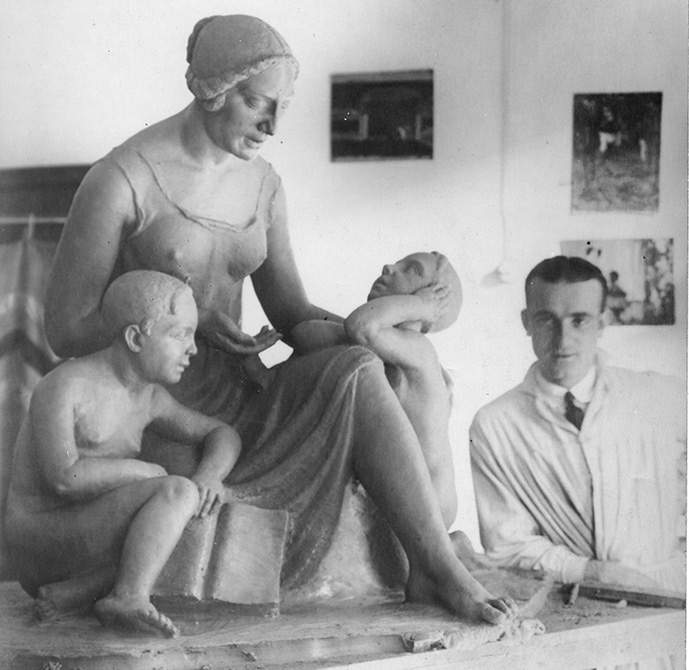Lucio Fontana's origins are reconstructed in an exhibition in his native Argentina
From July 21 to August 21, 2019, the art of Lucio Fontana (Rosario, 1899 - Comabbio, 1968) returns ... to its origins: in fact, an exhibition is scheduled in the artist’s hometown of Rosario, Argentina, entitled Lucio Fontana. Los orígenes, curated by Valentina Spata and Chiara Barbato. The exhibition includes a selection of sixty drawings dated between the late 1930s and the late 1950s from the Centro Studi e Archivio della Comunicazione (CSAC) of the University of Parma (some of which have never been exhibited to the public), and a core of youthful sculptures from the permanent collection of the Museo Juan B. Castagnino in Rosario (the exhibition venue), all to reconstruct, for the first time in an exhibition, the lesser-known years of the master’s artistic career, that is, those of his formation, and to create a path-symbol of the deep cultural bond that unites Italy and Argentina.
Fontana, was in fact “the most Italian of Argentines and the most Argentine of Italians,” as claimed by Andrea Riccardi, president of the Dante Alighieri Society, creator of the project. Lucio Fontana’s story is also that of a link between two countries that are similar in language and culture: “South American inspiration and Lombard rigor,” argues Alessandro Masi, secretary general of the Dante Alighieri Society, “were combined in him in a happy synthesis, making him one of the most complex and fascinating personalities of the international artistic avant-garde of the second half of the 20th century.”
The artist took his first steps in Rosario in the 1920s, and several of his works are still preserved in the Argentine city. In the 1940s, having become a lecturer at the Academy of Fine Arts in Buenos Aires and a promoter of the Altamira Art School, Fontana was among the main protagonists of the international cultural debate. In 1946 the turning point for the artist with the publication, in Buenos Aires, of Manifiesto Blanco. The story of the origins through the drawings is complemented by a rich photo gallery, granted by the historical archives of the Lucio Fontana Foundation in Milan, and an itinerary to discover Fontana’s places in Rosario: among them, the headquarters of the Committee of the Dante Alighieri Society of Rosario, which holds two busts attributed to Lucio and his father Luigi.
The brainchild of Alessandro Masi, Lucio Fontana. Los Orígenes enjoys the patronage of the Ministry of Cultural Heritage and Activities, is produced by the Dante Alighieri Society in collaboration with the Committee of the Dante Alighieri Society of Rosario, the CSAC University of Parma and the Museo Municipal de Bellas Artes Juan B. Castagnino, and is organized, under the High Patronage of the President of the Republic as part of the 83rd International Congress of the Dante Alighieri Society entitled Italy, Argentina, the World: Italian Unites Us and the ICE Italy-Argentina “Cult & Tech” Forum, with the support of the Ministry of Foreign Affairs and International Cooperation, the Ministry of Economic Development and ICE-Agency.
Pictured: Lucio Fontana working on the monument El pueblo de Rosario to Juana Blanco, 1926
 |
| Lucio Fontana's origins are reconstructed in an exhibition in his native Argentina |
Warning: the translation into English of the original Italian article was created using automatic tools. We undertake to review all articles, but we do not guarantee the total absence of inaccuracies in the translation due to the program. You can find the original by clicking on the ITA button. If you find any mistake,please contact us.



























